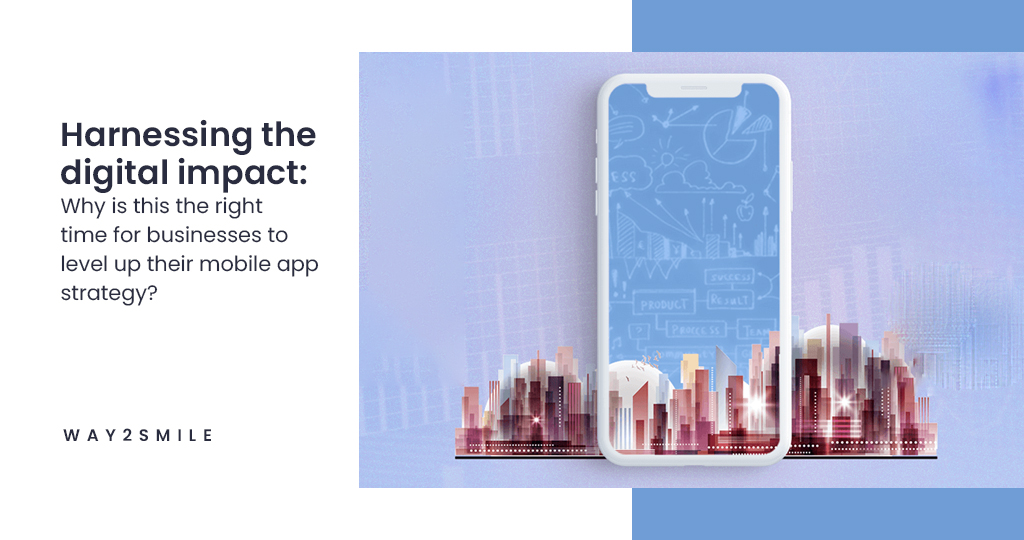From simple, one-dimensional digital applications to being the ultimate gateway to the digital world- mobile applications have come a long way ever since they first entered the market. Now, mobile apps help entrepreneurs and business organizations to tap into billion-dollar markets with ease. Even governments of many countries use mobile apps to reach out to their people. They were particularly helpful in raising awareness and controlling rumors and false news during the COVID pandemic.
While it's obvious that mobile apps are the center of the digital revolution we are witnessing in the world, many brands and organizations fail to understand that a mobile application evolves along with its audience. Imagine the initial version of Instagram. While it was basic and suited the then-available devices, the scope for Instagram is completely different now. Now, it's one of the biggest advertising platforms for brands, and the app itself helps various organizations understand the When businesses view their mobile applications as just digital products, they may not fully tap into their digital prowess.
Whatever a business' digital vision is, consumers/users will experience that digital vision through applications. Rather, they should see them as platforms through which your target audience can experience their brand. This shift in perspective will empower businesses to make digital an inclusive aspect of their operations, allowing for better synergy between their business operations and the digital vision. But what makes a mobile application churn millions of dollars for a business? Why are some mobile apps more successful than others? And if there are a million apps in the market, how does your business build an app that reflects your brand's core vision?
One size doesn't fit all
Successful mobile app strategies have always put user experience at its core instead of following an existing formula. While there are specific design and development trends that businesses can hop on, the core idea of an app is to help solve a user's problem. So, it's important for this idea to be embedded in the development strategy itself. While different companies follow different mantras,
the development process consists of these basic steps.

Companies also adopt different technologies and techniques to get the desired results. But the fundamental of all these techniques is to get the User Experience or UX right. Think of UX as a combination of your brand and digital identity. UX has never been more important than now, as most brands are figuring out a way to deliver a singular, holistic experience through multiple touchpoints- TX or Total Experience. Total Experience will essentially simplify the organization's digital capabilities for the users- be it employees or customers, making digital more human than ever.
And mobile applications are gonna be the drivers for TX. Brands will leverage the simplicity and resiliency of the mobile applications, not to mention the ease of accessibility, to deploy their TX strategy. This gives brands more control of their digital capabilities. So, it is important for a business to understand that there is no fixed formula for a successful app, but attempting to bridge the user's problem with your solution is the best strategy.
Trust in Occam's razor
In simple terms, Occam's razor is a principle that states that the simplest explanation is always the most probable answer. Getting unnecessary, overly complex things out of the picture is the easiest way to find the truth when trying to understand something.
While this may be a bold theory to practice and might not work in every context, it works surprisingly well when it comes to building a mobile application. In the age of minimalism, users want simple, easy-to-understand and easy-to-use applications, not complex ones. But it is also important to distinguish between the complexity of an idea vs. the complexity of accessing that idea.
Cognitive overload is a real setback in mobile applications, and users would never want to feel overwhelmed by the number of options available to them in an app. A popular UX law called Hick's law suggests that the time to make a decision increases with the number and complexity of choices.
If you look at successful ecommerce applications, you will find a direct relationship between the number of purchases and the platform's simplicity. For instance, companies like Amazon keep the whole design basic to help users easily move through the application. By limiting the options available for their users, they allow them to be more conscious about the product they are looking at, and the whole purchase happens in just 3-4 clicks.
But this is a global phenomenon, and only a handful of mobile app development companies in Dubai recognize and understand this perspective shift in app strategies.
Final thoughts
Technologies like Artificial Intelligence, Machine Learning, Big Data, AR & VR are creating opportunities for businesses like never before. Our overall digital capabilities are drastically increasing, and mobile applications are evolving to be the window for both customers and businesses to look into their digital strategy. Given the rate at which our hardware capabilities are increasing, mobile applications will be a crucial part of the digital ecosystem. So, businesses with a broader and deeper understanding of mobile applications will be the first ones to capitalize on this exciting future!







